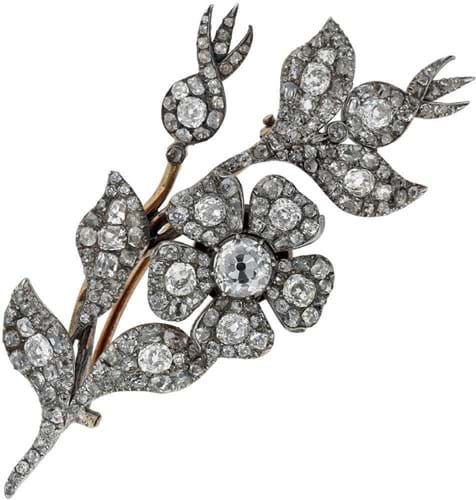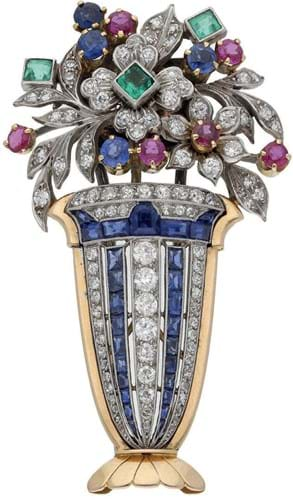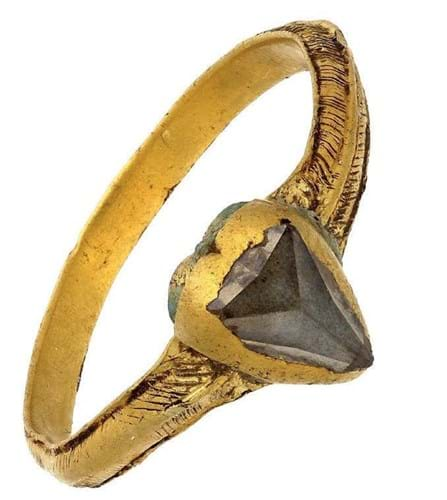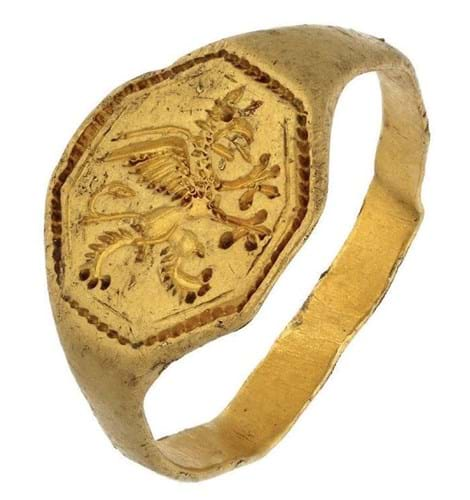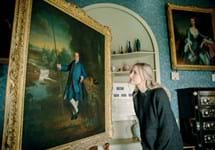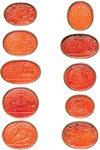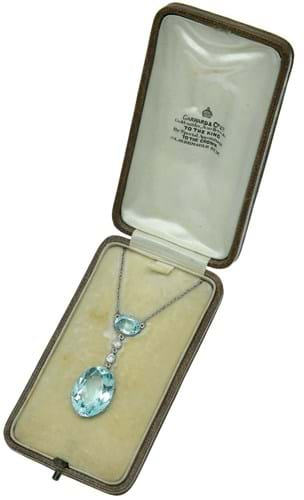
At the start of the First World War Britain produced just 35% of the food it ate. With the formation of the first Women’s Institutes in Wales, methods of conserving food became the norm. Then the creation of the Women’s Land Army (WLA), and more than a quarter of a million ‘land girls’, enabled production to move closer to home.
The remarkable Shropshire lady behind both projects was Louisa Wilkins (1873-1929).
An early student at Newnham College, Cambridge, learning about agriculture, she became governor of the Agricultural Organisation Society which advocated, and helped to organise, agricultural cooperativism.
Wilkins (née Jebb) had married her husband Roland Wilkins in 1907, the year before she published her best-selling travel book By Desert ways to Baghdad. According to family tradition, she had received an aquamarine and diamond two-stone pendant as his wedding gift.
Understandably, considerable interest emerged when this piece, with such a first-class pedigree, was offered at the Dix Noonan Webb (24% buyer’s premium) sale of Jewellery, Watches, Antiquities and Objects of Vertu on March 17. Housed in a Garrard case, it easily exceeded its £1500-2000 estimate and made £4800.
Respectable total
Whatever the economic outlook, buyers are still very much on the lookout for commercial and realistically priced goods.
Held in the unpromising circumstances of the early stages of social distancing, this catalogue achieved a perfectly respectable total of £215,000 and a selling rate of 73%.
Anything priced to sell did just that. Anything vaguely unfashionable, imperfect or estimated even a fraction too optimistically failed to sell. This is certainly the time for a pragmatic approach if a successful result is to follow.
Even before the current crisis the international diamond market was hardly flying. However, in spite of this, many of the better diamond pieces got away.
A good early Victorian diamond flower spray brooch guided cautiously at £2000-2600 made £5000 even though it had later modifications. Pavé set throughout with graduated old-cut diamonds, the open flowerhead was mounted ‘en tremblant’.
A 4.3ct diamond solitaire ring was the top lot of the day, securing £14,000 against a guide of £12,000-15,000, while a diamond line bracelet achieved a mid-estimate £6000.
Another popular lot was a pre-war multi-gem-set giardinetto brooch. This was modelled as a tall vase millegrain set with graduated brilliant and single-cut diamonds and calibré-cut sapphires, and a bouquet of diamonds accented with round-cut rubies and sapphires and collet set calibré emeralds. It soared to reach over three times its top estimate at £7500.
Relative newcomer
Stand-alone jewellery sales are a relative newcomer at DNW, a business long respected for coins, medals and banknotes but not an established choice for clients wishing to buy or sell a diamond ring or a ruby bracelet.
It’s all about timing, of course. The firm recognised a gap in the market for an alternative Mayfair-based jewellery department and found in two erstwhile and available Bonhams staff the experienced specialists who might create it.
Frances Noble, former head of jewellery at Bonhams Oxford, was subsequently joined by colleague Laura Smith, who is both a knowledgeable valuer and very competent auctioneer.
Areas exist where jewellery and numismatics dovetail nicely. Building on the firm’s strength in selling ancient and medieval coinage is a growing reputation for objects of vertu and jewellery located by metal detectorists – a growing market if there ever was one.
'One off' collectables
These ‘one-off’ collectables have been a particularly successful feature for DNW: a good example being the fine and crisp 17th century gold signet ring discovered near Loch Lomond and sold last year for £14,000.
At this March sale a pretty Tudor gold, enamel and heart-shaped diamond ring took £4200 (estimate £1600-2000).
In his 1995 book Diamond Cuts in Historic Jewellery, Herbert Tillander notes that this type of three faceted shield-shaped diamond has been known at least since the early 14th century and is termed the chiffre cut after the word ‘cipher’. This particular ring was discovered on farmland near Windsor in a wooden area that was royal hunting land in the 16th century.
A 15th century bronze seal matrix for the Deanery of Brecknock (modern-day Brecon), discovered by a landscape gardener in Wales digging his in-law’s garden, fetched £2600 against an estimate of £1600-2000, while a late 16th century gold signet ring engraved with a griffin crest estimated at £800-1200 achieved £2600.
At the ‘more affordable’ end were two medieval bronze keys, probably for manor houses or church doors, sold at £100 apiece.
The only notable casualty in this section was the eye-catching Tudor silver gilt hawking whistle – a terrific object but at £6000-8000 possibly a little too stiffly priced.
In these uncertain times bidders are proving to be understandably sensitive to pricing.

